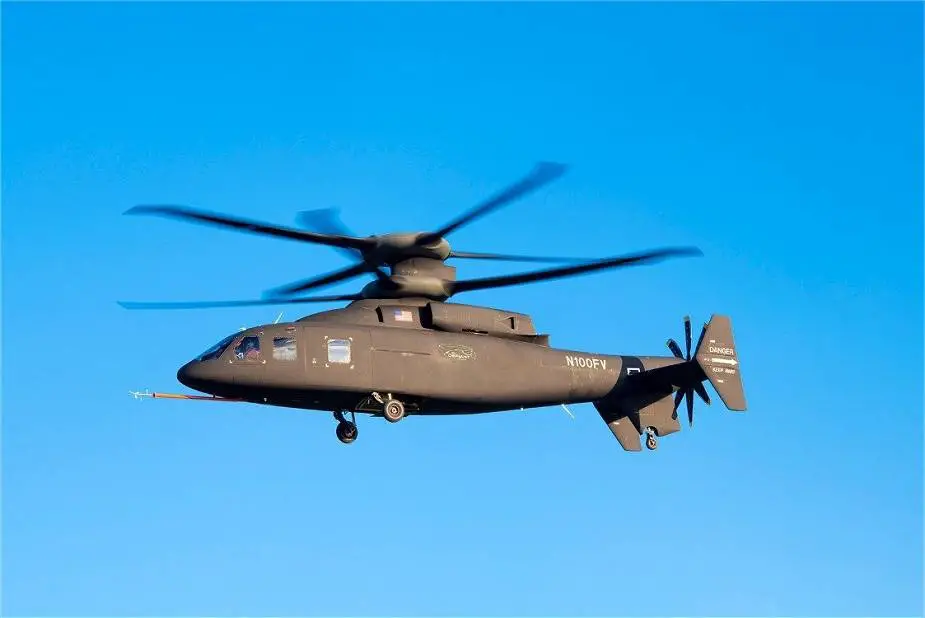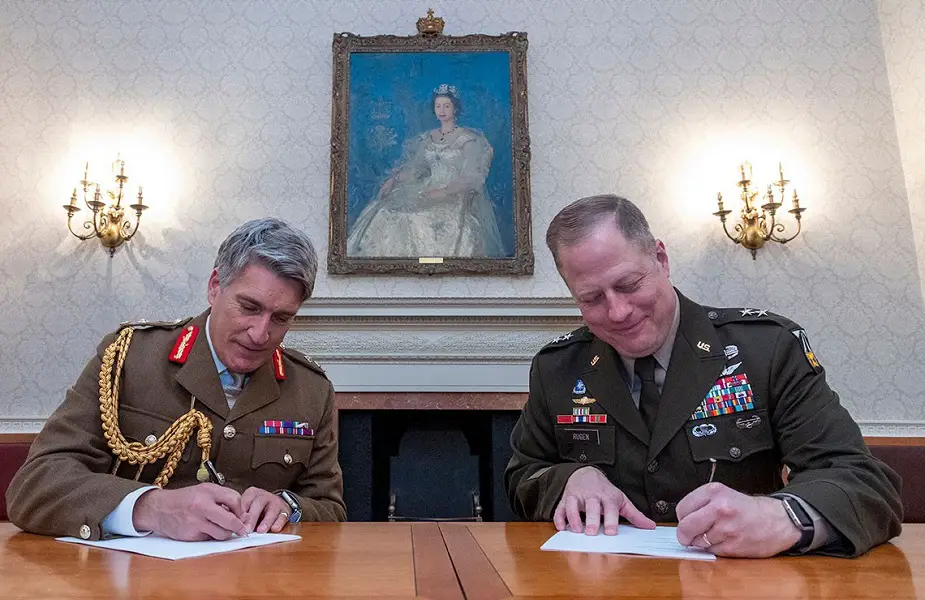Breaking news
US and UK armies agree to share Future Vertical Lift program info.
Army leaders from the United States and United Kingdom signed a Future Vertical Lift Cooperative Program Feasibility Assessment project arrangement on behalf of their respective countries’ services on Feb. 14, 2022, pledging to work together to ensure interoperability between the two nations’ future rotorcraft aviation forces.
Follow Air Recognition on Google News at this link

SB-1 Defiant from Sikorsky-Boeing, in competition in the Future Vertical Lift Program (Picture source Boeing)
Under the arrangement signed by Maj. Gen. Walter “Wally” Rugen, the U.S. Army Future Command’s Future Vertical Lift Cross-Functional Team director, and Major-General James Bowder, Director Futures, the two nations will share information about their future rotorcraft requirements and programs. They will also explore and analyze new concepts for the employment of coalition air power in the lower-tier air domain, the air space where Army aviation typically operates. Through this joint analysis, the U.S. and U.K. will be able to assess the benefits, risks and overall feasibility of rotorcraft cooperation between the two allies. This arrangement is in addition to an already existing partnership the U.K. has with the U.S. Army and Navy that aims to reduce the divergence between the two countries’ open-system architectures, a key component to keeping pace with emerging technology and rapid adaptability and capability evolution.
Program objectives include:
· Identifying opportunities to reduce future rotorcraft program cost, schedule and performance risk.
· Enabling and improving rotorcraft interoperability and integration between the armed forces.
· Assessing the feasibility of and identifying and assessing risks associated with pursuing future cooperation in the Research, Development, Test and Evaluation, production, sustainment, and follow-on development of future rotorcraft.
· Providing the two nations with information to use in their respective national decision-making processes.
· Promoting future rotorcraft cooperative RDT&E.
· Developing plans for cooperation in future phases of the U.S. Department of Defense FVL program.
 Under the arrangement signed by Maj. Gen. Walter “Wally” Rugen, the U.S. Army Future Command’s Future Vertical Lift Cross-Functional Team director, and Major-General James Bowder, Director Futures, the two nations will share information about their future rotorcraft requirements and programs. They will also explore and analyze new concepts for the employment of coalition air power in the lower-tier air domain, the air space where Army aviation typically operates (Picture source: US Army)
Under the arrangement signed by Maj. Gen. Walter “Wally” Rugen, the U.S. Army Future Command’s Future Vertical Lift Cross-Functional Team director, and Major-General James Bowder, Director Futures, the two nations will share information about their future rotorcraft requirements and programs. They will also explore and analyze new concepts for the employment of coalition air power in the lower-tier air domain, the air space where Army aviation typically operates (Picture source: US Army)
“The Army completed Project Convergence 21 – our largest Joint experiment in 15 years – last fall, and this year PC22 will include allied nations,” Rugen said. “Arrangements like these will ultimately improve our capabilities and strengthen our forces, focusing on joint lethality, survivability and reach, while ensuring affordability for both our countries.”
The U.S. and U.K. have a long history of partnership and cooperation in Army aviation, and the FVL project arrangement is an important step in expanding that relationship into the next generation of vertical lift capability and employment in future coalition operations.
“As you would expect, the British Army has an extremely close and productive relationship with the U.S. Army,” said Bowder. “Together we are stronger. Our deep science and technology collaboration is an important element of this and makes us both more competitive. Today’s agreement formalizes our cooperation to help determine the future direction of aviation in competition and conflict.”
U.S. Army Futures Command is modernizing Army Aviation with transformational speed, range and lethality to achieve decision dominance for the Joint Force in Multi-Domain Operations. The two nations will assess collaboration opportunities on the Future Long-Range Assault Aircraft and the Future Attack Reconnaissance Aircraft, the U.S. Army’s top two aviation modernization priorities, as well as Future Unmanned Aerial Systems, Air Launched Effects, and Open Systems Architecture, among other DoD programs.
The U.S. Office of the Assistant Secretary of the Army for Defense Exports and Cooperation is responsible for negotiating international armaments cooperation agreements like this one. Leveraging foreign technologies, capabilities and investment supports U.S. Army readiness, modernization and interoperability goals.
See also :
- Review Part 1 US Army Future Vertical Lift FVL program: Bell V-280 Valor tiltrotor aircraft
- Review Part 2 US Army Future Vertical Lift FVL program: SB-1 Defiant Sikorsky-Boeing


























